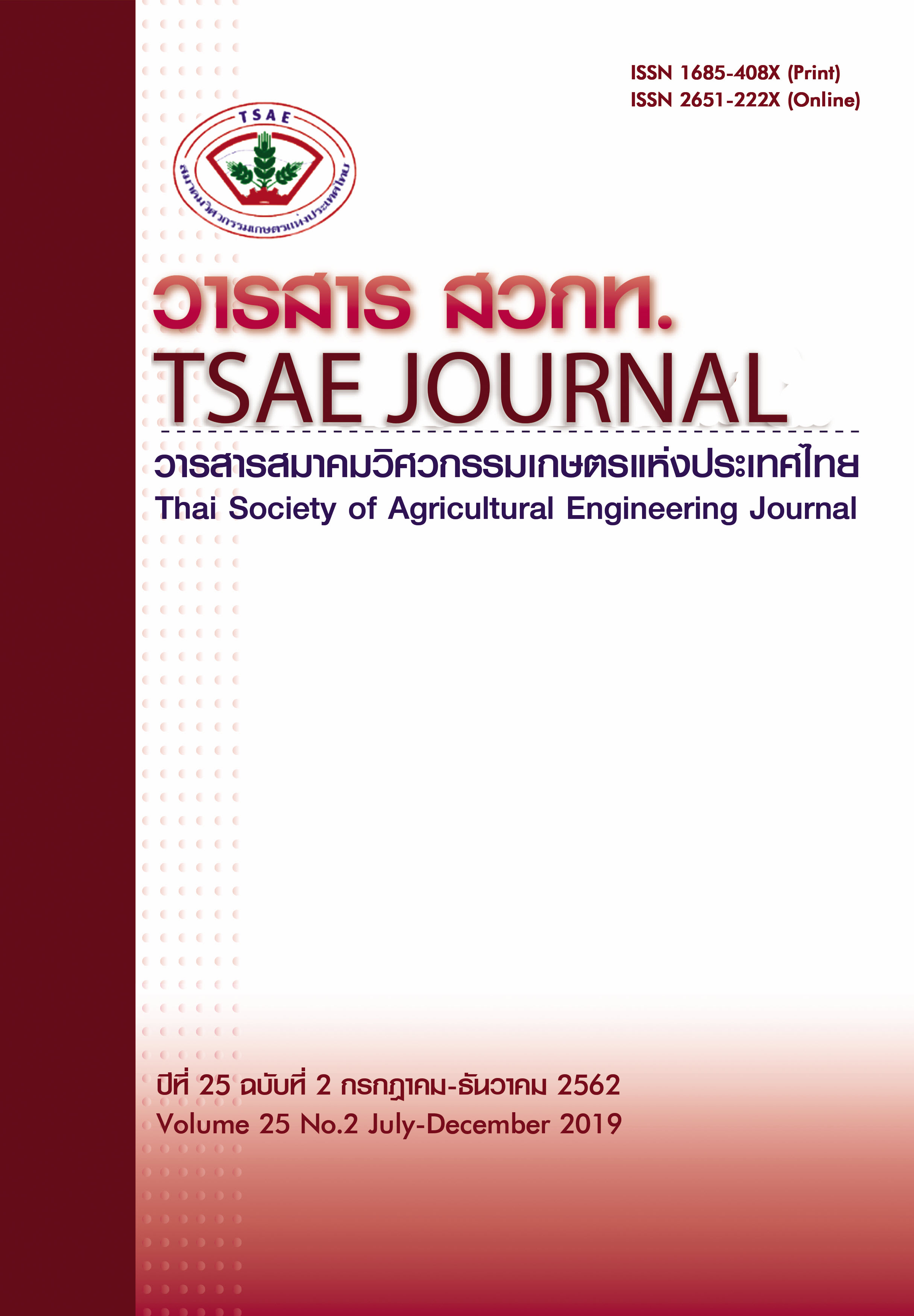Informative selection of spectra obtained from an online sugar content prediction system of sugarcane by using statistical index
Main Article Content
บทคัดย่อ
The aim of this research is to optimize the spectral filtration in an online soluble solids content measuring system of sugarcane. Assessment of the application of principal component analysis (PCA) and cluster analysis for filtering out non-sugarcane (floor and slat) spectra was first performed. Besides, the presentation and evaluation of the statistical index in keeping up the sugarcane detection were then performed. Screening out non-sugarcane spectra using both the PCA and cluster analysis was still not perfect because they could handle with the floor responses only not a slat one. For the proposed statistical index, the index value of -0.6 was used as an effective threshold to distinguish between sugarcane and non-sugarcane detections. As the result, only sugarcane responses were kept up. Importantly, no kidnapping the spectral sets after the filtration by using this index.
Article Details
สมาคมวิศวกรรมเกษตรแห่งประเทศไทย
Thai Socities of Agricultural Engineering
References
perspective. Proceedings of the 24th Congress of the International Society of Sugar Cane Technologists 38-46.
Cookson, C., 2012. A tank of sugar: how Brazil runs on biofuel. FT Magazine, United Kingdom.
Filzmoser, P., Varmuza, K. 2017. chemometrics: Multivariate Statistical Analysis in Chemometrics. R package version 1.4.2. https://CRAN.R-
project.org/package=chemometrics.
Kingston, G., Hyde, R.E. 1995. Intra-field variation of commercial cane sugar (CCS) values. Proceedings of the Australian Society of Sugar Cane Technologists 17, 30-38.
Klute, U. 2007. Microwave measuring technology for the sugar industry. International Sugar Journal 109(1308), 1-6.
Mccarthy, S., Billingsley, J. 2002. A sensor for the sugar cane harvester topper. Sensor Review 22(3), 242-246.
Nawi, N.M., Chen, G., Jensen, T. 2013b. Visible and shortwave near infrared spectroscopy for predicting sugar content of sugarcane based on a cross-sectional scanning method. Journal of Near Infrared Spectroscopy 21, 289–297.
Nawi, N.M., Chen, G., Jensen, T., Mehdizadeh, S.A. 2013a. Prediction and classification of sugar content of sugarcane based on skin scanning using visible and shortwave near infrared. Biosystems Engineering 115(2) 154-161.
Nelson, S.O. 1987. Potential agricultural applications for RF and microwave energy. Transactions of the ASAE 30(3), 818-831.
Otto, M. 1999. Chemometrics: Statistics and Computer Application in Analytical Chemistry. Wiley‐VCH, New York.
Phetpan, K., Udompetaikul, V., Sirisomboon, P. 2018. An online visible and near-infrared spectroscopic technique for the real-time evaluation of the soluble solids content of sugarcane billets on an elevator conveyor. Computers and Electronics in Agriculture 154, 460-466.
R Core Team. 2018. R: A language and environment for statistical computing. R Foundation for Statistical Computing, Vienna, Austria. URL https://www.R-project.org/.
Shah, S., Joshi, M. 2010. Modeling microwave drying kinetics of sugarcane bagasse. International Journal of Electronics Engineering 2 (1), 159–163.
United Nations. 2017. News: World population projected to reach 9.8 billion in 2050, and 11.2 billion in 2100. Available at: https://www.un.org/development/desa/en/news/population/world-population-prospects-2017.html. Accessed on 4 January 2019.
Wickham, H., Francois, R., Henry, L., Müller, K. 2017. dplyr: A Grammar of Data Manipulation. R package version 0.7.4. https://CRAN.R-project.org/package=dplyr.

